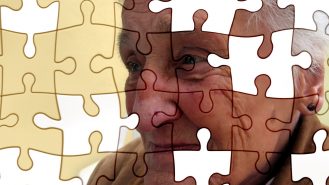Course organiser:David Chapple
Our cosmology course in 2011 looked at the origin and nature of the universe and the beliefs held by mankind down through the ages, including the ‘Big Bang’ theory. This course introduces the science of astronomy: the study of celestial objects, their physics, chemistry, and evolution, and phenomena that originate outside the Earth. We learn about our place in the universe, the composition of our solar system and galaxy and how we have found out. We will find answers to such questions as: What keeps us in orbit? How does the sun work? What are stars made of? What is dark matter and dark energy? The night sky will become even more wondrous as we gaze up into the heavens on those cold frosty nights!
11 Jul:
Dr Karen Pollard on 'Our Solar System (Part 1)': An introduction to the nature and types of objects that make up our solar system in general terms. The way in which various space vehicles and space craft have helped explore and understand these solar system objects will be summarised. Karen will also discuss current ideas of how we believe solar systems form.
18 Jul:
Dr Karen Pollard on 'The Universe': Karen will present our current understanding of the nature of the universe with
particular reference to normal matter, dark matter and dark energy. She will
also highlight interesting astronomical research taking place at the
University of Canterbury's Mt John University Observatory, research from
around the world and from space-based satellites and its significance for
the future.
25 Jul:
Mr Alan Gilmore on 'Our Galaxy, the Milky Way (Part 1)': • The shape and size of our galaxy and our position in it.
• Our galactic neighbours – the double stars, clusters, nebulae, supernovae and dark matter.
• The night sky, star names, constellations.
(A handout accompanies this session)
1 Aug:
Professor John Hearnshaw on 'Our Galaxy, the Milky Way (Part 2) The Lives of the Stars.': Professor Hearnshaw will discuss five questions relating to modern stellar astronomy.
• How hot are the stars? • How massive are the stars? • How old are the stars? • How are stars born, and how do they die? • What are stars made of?
He answers these questions from the point of view of our present-day knowledge in astronomy, but an historical perspective to these questions will also be introduced showing when and how the answers entered into current astronomical knowledge.
8 Aug:
Professor Jack Baggaley on 'Our Solar System (Part 2)': This session will cover the material of the Solar System that is much smaller than the major planets but also much more abundant: asteroids, comets, meteoroids and dust. Importantly, it is out of this ubiquitous material that the Solar System was created. We will discover how the objects in the Solar System move and what governs their orbits around the Sun. We will devote some final descriptions on methods that are used to measure the sizes and distances from the Sun of the members of the Solar System.






